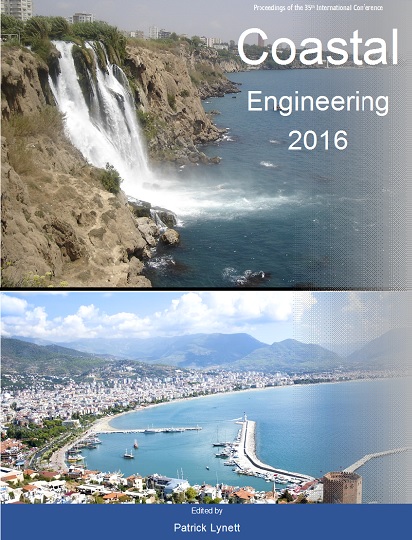Abstract
Long-term shoreline changes on the marginal coast of the Banzu tidal flat in Tokyo Bay were investigated using aerial photographs. In the area immediately north of the Obitsu River mouth, the beach was eroded owing to the decrease in sand supply from the river, resulting in the exposure of a layer composed of cohesive material in the previous tidal flat, and sand was transported northward to form a sand spit at the mouth of the north tributary. In 2011, the giant tsunami generated by the Great East Japan Earthquake propagated deep into Tokyo Bay, and sand bars were pushed landward by 7 m parallel to the shoreline owing to the tsunami overflow.References
Japan Meteorological Agency.2011.http://www.jma.go.jp/jma/kishou/books/saigaiji/saigaiji_20
/saigaiji_201101.html.
Mita, K., A. Kobayashi, T. Uda, and Y. Noshi. 2014. Beach changes along northern coast of Futtsu
cuspate foreland and effect of 2011 Great Tsunami, Proc. JSCE, B3 (Civil Eng. in the Ocean), 70
(2), I_600-I_605, 2014. (in Japanese)
Murakami, K. 2008. Characteristics comparison of different type tidal flats in Tokyo Inner Bay using
water environment soundness index, Proc. JSCE, B3 (Civil Eng. in the Ocean),67(2), I_469-
I_474, 2011. (in Japanese)
San-nami, T., T. Uda, S. Miyahara, and M. Serizawa. 2015. Deformation of an isolated offshore sand
bar on tidal flat and mergence with beach due to waves, Coastal Sediments '15, CD-ROM, 14, pp.1-14.

